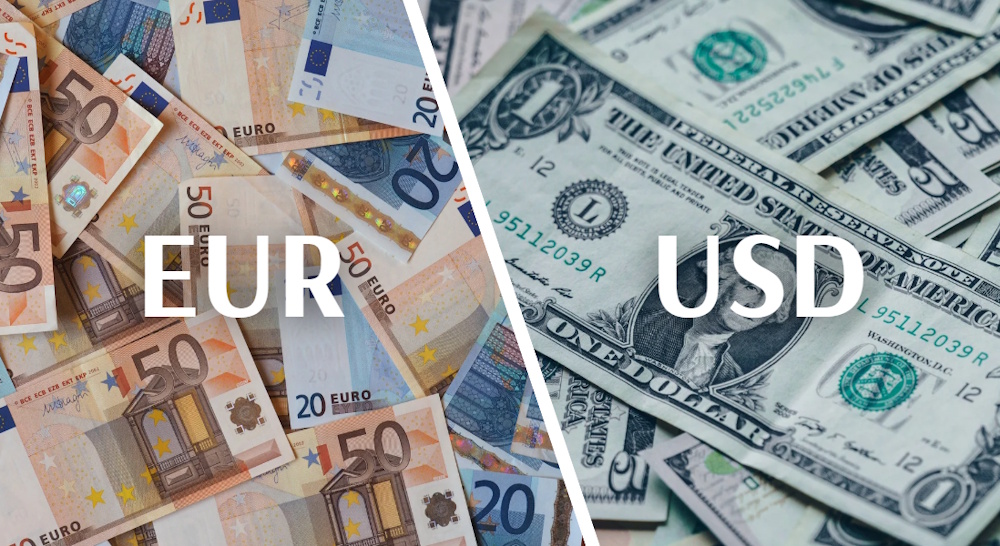The EUR/USD pair continued its downward trend on Tuesday, dropping towards 1.1650, marking its lowest point in over a month. This movement comes as investors moved away from European assets due to a worsening political crisis in France, while a strong U.S. dollar was bolstered by hawkish comments from the Federal Reserve. The euro, after a brief attempt to rise above 1.1700, was unable to maintain its momentum, declining by 0.42% during the day. Market participants are facing multiple challenges: political instability in the eurozone’s second-largest economy and ongoing uncertainty regarding the U.S. government shutdown, which continues to impact global risk sentiment. France’s fiscal and political outlook continues to be the focal point of pressure on the euro. Prime Minister Sébastien Lecornu’s resignation after just 27 days in office has presented President Emmanuel Macron with the most significant domestic challenge of his administration. Macron’s directive for Lecornu to engage in negotiations with coalition leaders has not succeeded in stabilizing markets, as opposition parties advocate for early elections. The current political vacuum in France casts uncertainty over fiscal consolidation efforts, as the nation’s deficit approaches nearly double the EU’s 3% threshold, which poses a risk of potential credit downgrades. Concerns among investors indicate that a further sovereign downgrade may result in an increase of French yields by 30–40 basis points, thereby tightening financing conditions throughout the bloc.
The European Central Bank finds itself in a challenging position, balancing the need for inflation control against the backdrop of declining regional growth. ECB President Christine Lagarde indicated this week that the “disinflationary process is over,” implying that the recent decrease in price pressures may have reached a standstill. Vice President Luis de Guindos recognized the potential risks of recession, while Bundesbank President Joachim Nagel emphasized the importance of “preserving credibility through restraint.” Current market expectations indicate a 46% likelihood of an additional 25-basis-point reduction by December, while bond spreads between Italy and Germany have expanded to 184 basis points, marking the highest level since March. Lagarde and Nagel’s forthcoming speeches are anticipated to elucidate the central bank’s stance on the prioritization of inflation stability versus economic growth. The recent German data has contributed to the prevailing pessimism, as factory orders declined by 0.8% in August, significantly underperforming the anticipated 1.4% increase and extending the previous month’s contraction of 2.7% in July. This collection of disappointing data reinforces the perspective that Europe’s manufacturing sector continues to face significant challenges.
The U.S. Dollar Index persists in surpassing forecasts, currently trading around 98.33, marking its second consecutive daily increase, following remarks from Kansas City Fed President Jeffrey Schmid, who highlighted that inflation “remains too high.” Even with a 94% likelihood of a Fed rate cut in October and an 84% chance in December, the dollar’s strength highlights the market’s inclination towards safety amid global political tensions. The ongoing U.S. government shutdown, currently in its seventh day, has not diminished the strength of the dollar, as traders take precautions against possible instability in Europe. Fed officials Raphael Bostic, Neel Kashkari, Michelle Bowman, and Stephen Miran are set to address the market later today, and any hawkish signals may enhance the dollar’s position. The extended shutdown is hindering the release of essential data including Nonfarm Payrolls, CPI, and Retail Sales, which is contributing to uncertainty in the Federal Reserve’s decision-making process. Nonetheless, the Fed’s assurance in its “well-calibrated” policy has mitigated widespread panic, thereby sustaining Treasury yields at 4.12% on the 10-year note.
The EUR/USD structure is currently characterized by a clear bearish trend. The pair has struggled to regain its descending trendline from mid-September, as the 50-day EMA stands at 1.1726 and the 200-day EMA at 1.1715, both flattening and indicating a deficiency in upward momentum. Immediate support is located around 1.1645, aligning with the low from September 25. A decline beneath this level may lead to targets at 1.1610 and 1.1575, which represent the lows observed in early September and late August, respectively. The RSI levels on the four-hour chart have settled beneath 50, suggesting that bearish momentum continues to prevail, while the MACD remains positioned below its signal line. Resistance levels are identified at 1.1730, with more significant barriers at 1.1765–1.1775 and 1.1820, delineating the upper boundaries of September’s range. Unless EUR/USD reclaims 1.1730, the pair’s bias remains firmly tilted to the downside.

